Many new piano students start out learning piano notes. But once you get into chords, you’ll really get a sense of the rich, complex sound the piano is capable of. In this list, we’ll take a closer look at how piano chords are constructed. We’ll also introduce you to some common chords, their chord symbols, and how to play them.
Piano Chords: A Beginner’s Guide
1. What’s A Chord?
A piano chord is made up of more than one note played at the same time. Most chords are triads or three-note chords. Chords play an important part in music. Usually, they make up the harmony of a song, while the notes make the melody.
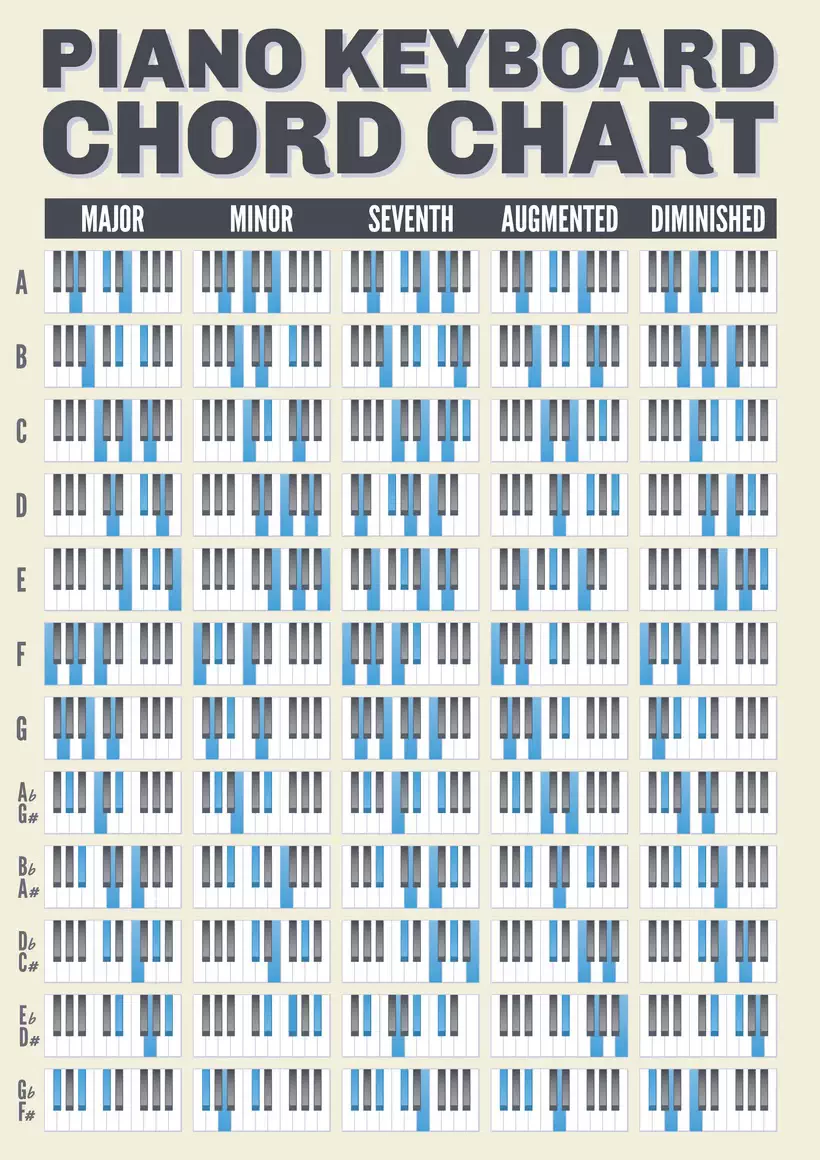
On the piano, chords are typically played with your left hand. At the same time, your right-hand play the individual notes that make up the song’s melody.
As you can see from the chord chart above, there’s a huge variety of chords for piano. So where do you start? Major and minor chords are two types of basic piano chords that most beginners learn. Once you get a feel for different piano chords and chord symbols, you’ll really start understanding the beauty and musicality of chords.
You don’t even need to know many chords to play a song — many a pop song is made up of four chords or less. In many cases, the same chord progression will repeat itself throughout a song.
2. Understanding Intervals
Many of the beginner piano chords we’ll go over today include three notes: a basic root, a third, and a fifth. These terms, called intervals, are often thrown around in music theory, but most new players aren’t sure exactly what they mean.
To figure out roots, thirds, and fifths, you first need the major scale in the key of your root note. So if we want to make a C major chord, we need the C major scale first.
If you’ve already done some studying with piano notes, you may already be familiar with the major scale. To get the major scale from a given root, you need to follow a pattern of whole and half steps: whole step-whole step-half step-whole step-whole step-whole step-half step. You can abbreviate this as WWHWWWH.
But what are whole and half steps? On the piano, a half step is made up of two keys that are adjacent. This includes white and black keys. A whole step is made of two keys with another key between them.
The C note is the root of the C chord. So if we follow the WWHWWWH pattern to get the C major scale, we get this:

The C major scale is often the first major scale a beginner learns, as it contains no sharps or flats.
Having some knowledge of intervals will help major and minor chords make sense. But as you learn basic chords, don’t feel like you need to memorize this process or go through it every time. It’s just a good idea to understand some of the backgrounds before you dive into learning chords.
3. Making A Major Chord
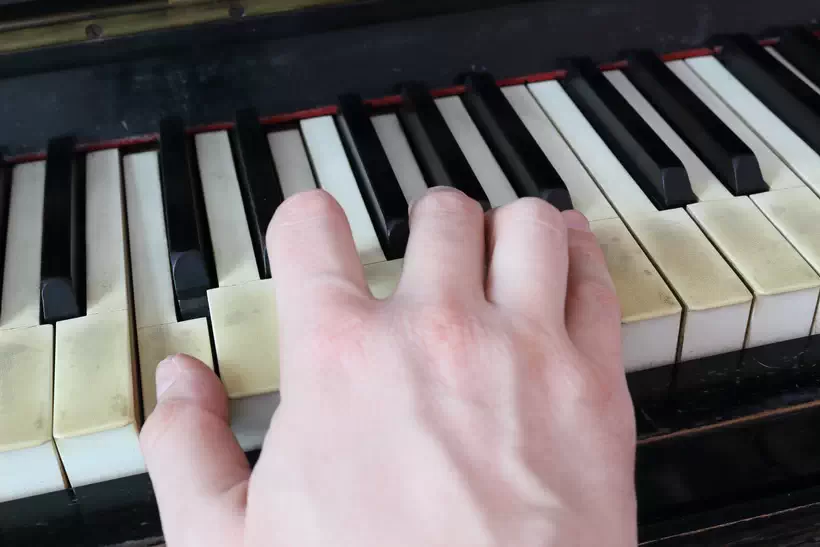
The first basic piano chords most people learn are major chords. Most of your favorite songs will almost certainly contain a major chord or two. Major chords tend to have a happy, upbeat sound.
A major triad (the most common type of major chord) contains three notes: a root, a major third, and a perfect fifth. If you’re looking at the major scale for a given root note, the major third is the third note in the scale. And as you may have guessed, the perfect fifth is the fifth note in the scale.
So going off the C major scale, CDEFGAB, the major third is E and the perfect fifth is G. So the chord of C major is made up of C, E, and G. This picture shows the C major chord marked with cherries on the keyboard:
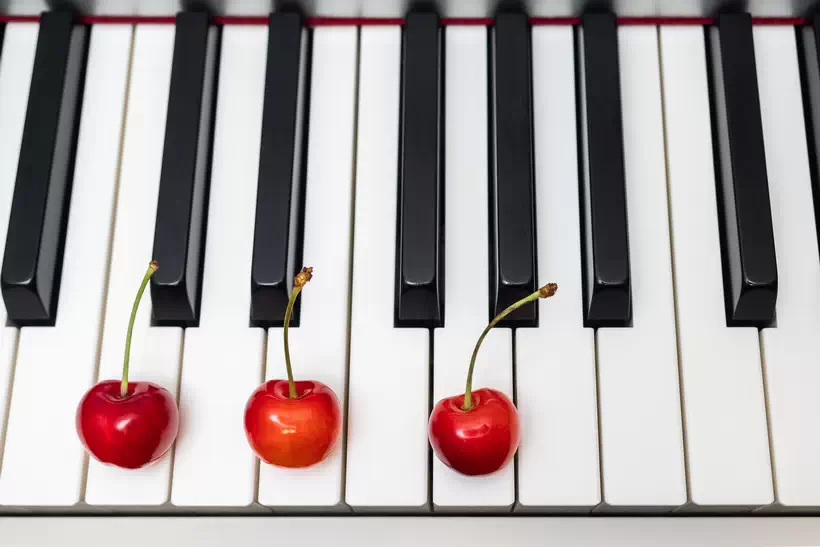
You might be wondering what the chord symbol for C major is. Luckily, learning chord symbols isn’t as complex as reading sheet music — most are fairly straightforward. For a major chord, the chord symbol is just the root note, so C major is just written as “C.”
If you’re reading a chord on a piece of sheet music, it will appear as all notes of the chord stacked on top of one another.
Of course, C major isn’t the only major chord you’ll learn. Here’s a list of some common major chords and the notes they contain:
- A major — A, C#, E
- B major — B, D#, F#
- C major — C, E, G
- D major — D, F#, A
- E major — E, G#, B
- F major — F, A, C
- G major — G, B, D
4. Building A Minor Chord
Minor chords are also likely to be among the first chords you learn. But while major chords sound happy and upbeat, minor chords have a darker, sadder sound.
Unsurprisingly, the minor chord version of a given major chord will have the same root note. The only difference between a major triad and a minor triad (with the same root note) is that a minor chord has a minor third (also called a flattened third). The minor third is what gives a minor chord its signature sad sound.
The easiest way to build a minor triad is looking at the notes in a given major triad and then changing the major third to a minor third. To do this, you just lower the major third by half a step. Let’s revisit the C major chord mentioned above.
The C major chord is made up of the notes C, E, and G, where E is the major third. Recall that to lower a note by a half step, you just go to the adjacent key with a lower pitch.
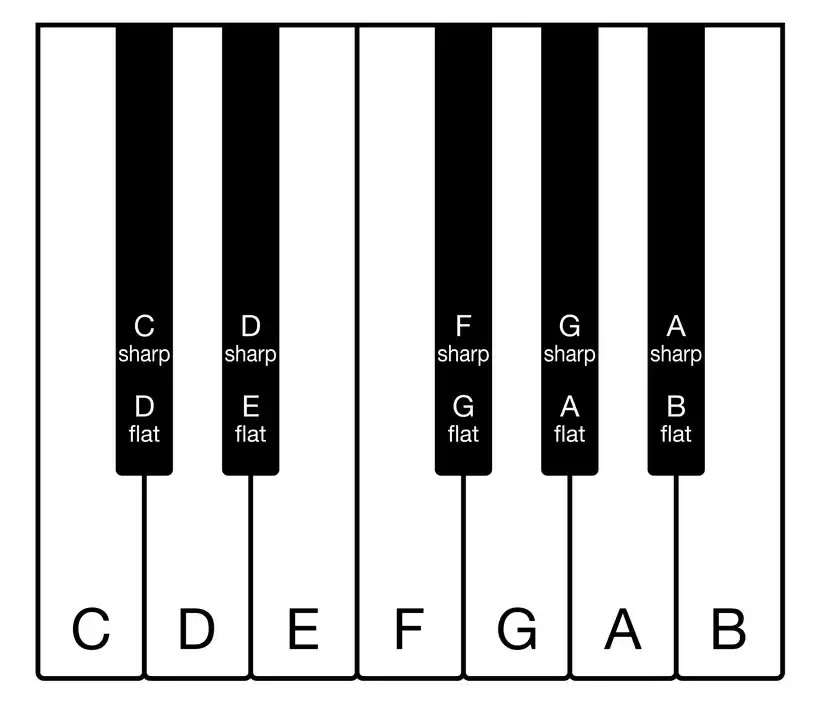
The key to the left of E is D#, so the C minor chord is made up of C, D#, and G. You may sometimes see D# written as Eb. These notes are enharmonic, meaning they have different names but refer to the exact same pitch.
However, when you’re writing the notes making up a minor chord, you’ll typically see the flat enharmonic note used. That’s because it makes it clearer that the major third has been flattened and not raised.
Here’s how to play C minor — the keys are marked with cherries again:
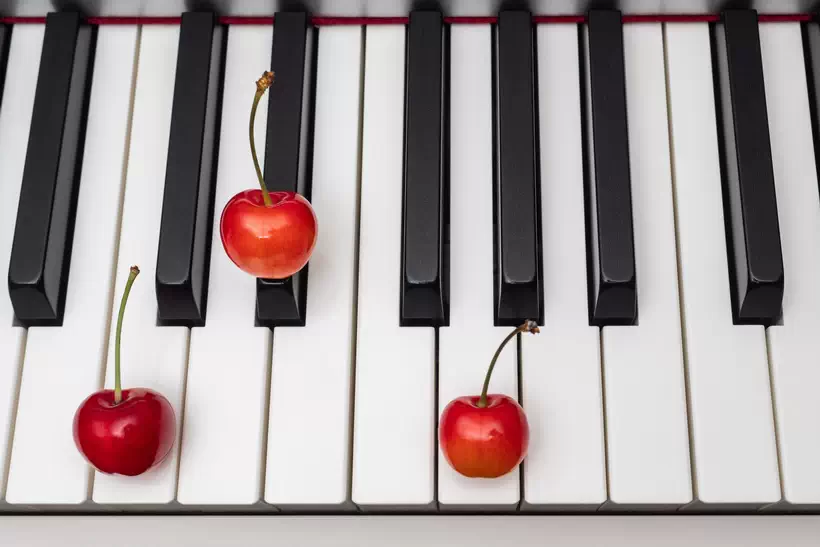
Let’s look at another example: the D major chord. The D major chord, as you can see on the list above, is made up of D, F#, and A. The major third is F#, which, when lowered by a half step, becomes F. So, a D minor chord is made up of D, F, and A.
The chord symbol for a minor chord is pretty simple. It’s just the letter of the root note followed by a lowercase m. So C minor is written as Cm.
Here are some common minor chords and the notes they’re made of:
- A minor — A, C, E
- B minor — B, D, F#
- C minor — C, Eb, G
- D minor — D, F, A
- E minor — E, G, B
- F minor — F, Ab, C
- G minor — G, Bb, D
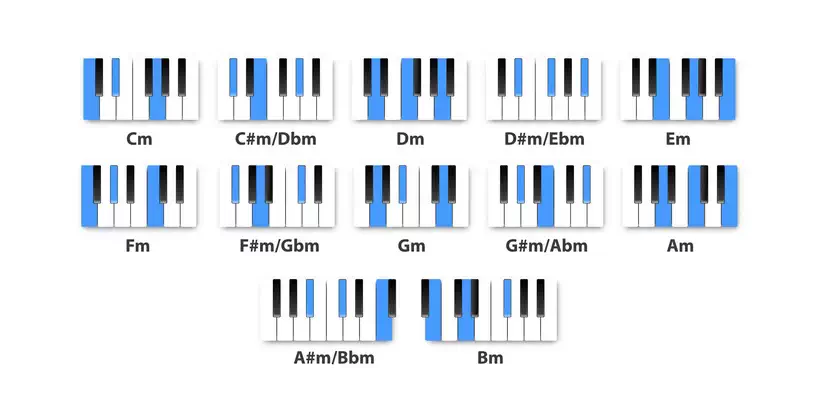
5. Beyond Major & Minor: Diminished Chords
You may have heard about diminished piano chords. This is a chord type that goes a bit beyond the basic chords. A diminished chord is a slightly different variation of a major or minor chord.
A diminished triad incorporates a root note, a minor third, and a diminished fifth. A diminished fifth is a perfect fifth that’s been lowered half a step. So to get a diminished chord, start with the root, third, and fifth of a major chord. Lower both the third and the fifth by half a step.
Let’s look at C diminished, abbreviated as Cdim. C major has a root, third, and fifth of C, E, and G. With a flattened third, you get Cm: C, D#, G. And to get Cdim, lower the fifth as well. So Cdim is made up of C, D#, and F# (also written as C, Eb, Gb).
Here’s how to play it (the keys are marked with stickers):
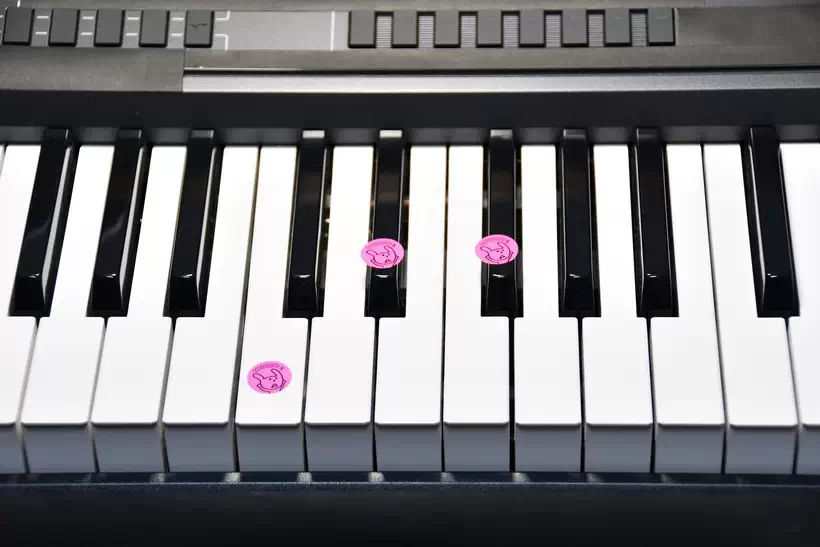
The combination of a root, flattened third, and diminished fifth sounds tense, dark, and even scary. If you’re not familiar with diminished chords, check out Cdim here (Video Below Left).
So how do you use a diminished chord? These chords aren’t too common in pop music. But when used sparingly and in a logical context, they can add momentary tension and help add more power to the resolution of a progression.
This video (Above Right) shows you several well-known songs that incorporate diminished chords, including “Bridge Over Troubled Water” by Simon & Garfunkel and “when the party’s over” by Billie Eilish.
Check out these common diminished chords and the notes they’re made of:
- A diminished — A, C, Eb
- B diminished — B, D, F
- C diminished — C, Eb, Gb
- D diminished — D, F, Ab
- E diminished — E, G, Bb
- F diminished — F, Ab, Cb
- G diminished — G, Bb, Db
6. Augmented Chords
Major chords sound happy, minor chords sound sad, and diminished chords sound scary. What about augmented chords? Augmented chords are hard to describe. They sound tense and unresolved but not as downright ominous as diminished chords. This video (below left) demonstrates a C augmented chord, abbreviated as Caug (or occasionally as C+).
An augmented chord is made simply by raising the fifth of a major triad by a half step. (An “augmented fifth” is another term for “raised fifth.”) So to get Caug, as demonstrated in the video above, first start with the notes of C major: C, E, and G. Since G is the fifth, we raise that by a half step to G#. When playing Caug, you just need to play C, E, and G#:
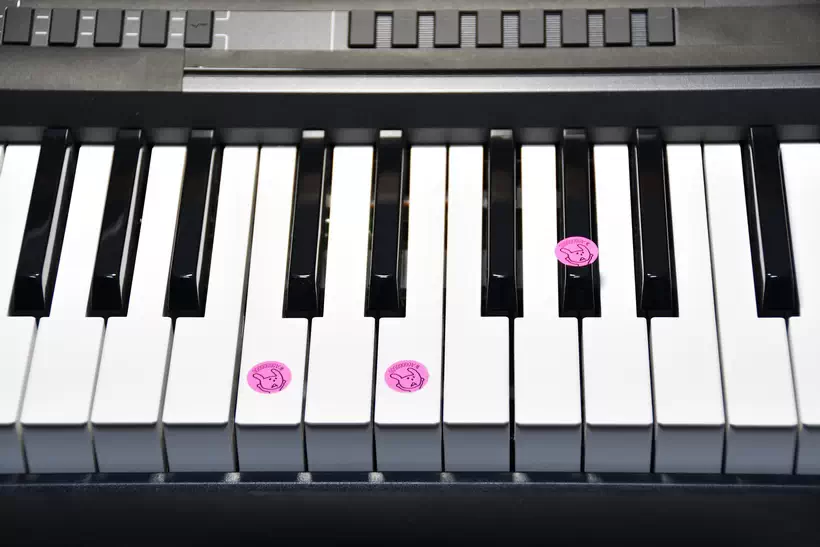
Augmented chords might sound strange enough to make you wonder how they could ever be incorporated into a song. But like diminished chords, they can make a song more dynamic by heightening the tension before it’s resolved.
This video (below right) shows you some songs that use augmented chords, including “Oh! Darling” by the Beatles and “The Warmth of the Sun” by the Beach Boys.
Here are some common augmented chords and how to play them:
- A augmented — A, C#, E#
- B augmented — B, D#, F##
- C augmented — C, E, G#
- D augmented — D, F#, A#
- E augmented — E, G#, B#
- F augmented — F, A, C#
- G augmented — G, B, D#
The presence of “E#” is probably confusing. After all, E raised by a half step is just F, so why don’t we call it that? The raised fifth is written as “E#” because it makes it clear that the fifth has been sharpened, or raised up.
Similarly, on the next line, you see an F followed by two sharps. The B major chord is made of B, D#, and F#. Sharpening F# makes G, but it’s instead written as “F##.” If it’s written as “G,” it implies that the fifth has been lowered a half step instead of raised a half step.
7. How Do You Actually Play Piano Chords?
As we mentioned earlier, you’ll usually be using your left hand to play chords. When you’re first learning chords, don’t worry about playing a melody at the same time.
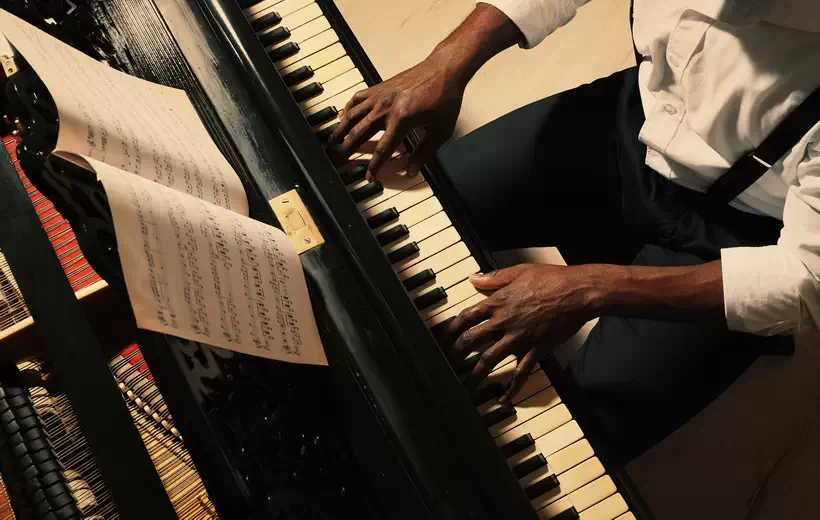
For the types of basic triads we looked at today, you usually will need to use your index finger, middle finger, and pinky. Since the keys in basic triads are more or less alternating, playing with these fingers minimizes the amount of hand stretching you’ll need to do.
Of course, especially if you’re self-taught, it’s a good idea to be extra careful about your form. This video offers some useful advice on hand position.
Ready to Learn More?
Having a piano chord chart can make it easier to remember different chords, and you can definitely teach yourself some of the basic chords for piano. But whether you’re just learning the way around the piano keyboard or have some experience, online piano lessons can offer the structure you need to develop as a musician.
These lessons are more convenient and affordable than you’re probably thinking. There are seemingly endless sites dedicated to helping you learn piano through video lessons and other resources, and you can learn on your own schedule.
Final Thoughts
We hope you feel a bit more comfortable venturing forth and practicing chords. Do you have any useful tips that may help other learners? Is there anything we left out? Please let us know in the comments, and don’t forget to share if you found our list useful!
